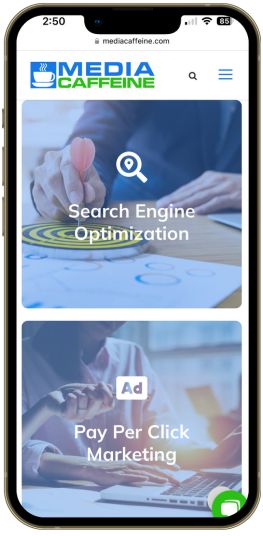In today’s digital landscape, your company’s website is often the first point of interaction between you and potential customers. With more consumers relying on online searches to find businesses, services, and products, having a well-optimized website is essential. The phrase “well-optimized” refers to more than just having a sleek design; it encompasses how well your site ranks on search engines, how easily users can navigate it, and how effectively it converts visitors into customers. As a digital marketing expert, I’ve seen firsthand what strategies work and which can be detrimental to your brand. In this article, I’ll break down the top do’s and don’ts of website optimization.
Table of Contents
Toggle1. Focus on User Experience (UX)
At the heart of every successful website is an exceptional user experience. A seamless, intuitive, and enjoyable experience will not only keep users on your site longer but also increase the likelihood of them taking action—whether it’s making a purchase, subscribing to a newsletter, or filling out a contact form.
How to improve UX:
- Use a clean, responsive design that works well on both desktop and mobile.
- Make sure navigation is simple, with clear calls-to-action (CTAs) that guide the user toward the next step.
- Optimize load times; slow websites lead to high bounce rates. Compress images and minimize scripts to enhance speed.
- Implement visual hierarchy, using contrasting sizes and colors for headings, subheadings, and CTAs to guide the visitor’s eye naturally through the content.
2. Prioritize Mobile Optimization
With over half of global website traffic coming from mobile devices, optimizing your website for mobile is non-negotiable. Mobile optimization means ensuring that your website is fully functional and aesthetically pleasing on smaller screens. Google’s mobile-first indexing also means that the mobile version of your site will determine your rankings in search results.
Key mobile optimization tactics:
- Use responsive design techniques to ensure your website adapts to different screen sizes.
- Optimize images and videos to load quickly on mobile devices.
- Ensure that buttons and links are touch-friendly, with enough spacing between clickable elements.
- Avoid pop-ups that cover the entire screen on mobile, as these can frustrate users and negatively impact your search rankings.

3. Implement On-Page SEO Best Practices
Search engine optimization (SEO) is crucial for increasing your site’s visibility in search results. On-page SEO focuses on optimizing individual web pages to rank higher and earn more relevant traffic.
On-page SEO essentials:
- Use descriptive, keyword-optimized meta titles and descriptions. These not only help with search rankings but also increase click-through rates from search results.
- Structure your content with heading tags (H1, H2, H3), using your primary keywords naturally throughout.
- Include internal and external links to provide additional value to your visitors and search engines.
- Optimize images with descriptive alt text, making your site more accessible and helping images rank in Google Image search.
4. Focus on High-Quality, Relevant Content
Content is still king when it comes to digital marketing. Creating valuable, informative, and engaging content tailored to your audience’s needs will not only improve your search rankings but also establish your company as a trusted resource in your industry.
Content creation tips:
- Regularly publish long-form content that addresses common questions, pain points, or trends within your industry.
- Update old content to keep it relevant and accurate. Google values freshness, so regularly updated content can lead to better rankings.
- Use a mix of blog posts, videos, infographics, and downloadable resources to keep users engaged.
- Incorporate primary and secondary keywords naturally throughout your content to help with SEO.

5. Use Analytics to Measure and Adjust Performance
Effective website optimization is not a one-time project. It requires ongoing monitoring and adjustments based on data insights. Using tools like Google Analytics allows you to track visitor behavior, traffic sources, bounce rates, and conversion rates.
Key metrics to track:
- Organic traffic: Monitor how much traffic you’re receiving from search engines.
- Bounce rate: A high bounce rate can indicate poor UX or irrelevant content.
- Conversion rate: Measure how well your website is converting visitors into leads or customers.
- Dwell time: The amount of time a user spends on a page can indicate how valuable your content is.
Once you have the data, use it to continuously refine your site. A/B testing different page elements can help you determine what drives the most engagement and conversions.
The Don’ts of Website Optimization
1. Don’t Ignore Site Speed
One of the most common mistakes businesses make is underestimating the importance of site speed. A slow-loading website can be a dealbreaker for users and a major ranking factor for search engines like Google.
Common causes of slow site speeds include:
- Large, uncompressed images.
- Bloated code, such as excessive JavaScript or CSS files.
- Poor web hosting services.
- Not using browser caching.
Address these issues by compressing images, minifying code, and choosing a reliable web host. Slow site speeds can result in high bounce rates, low rankings, and lost revenue.
2. Don’t Overlook Technical SEO
While content and on-page SEO are vital, technical SEO ensures that your website is accessible to search engines. Technical issues can cripple your SEO efforts, so it’s crucial to stay on top of them.
Technical SEO pitfalls to avoid:
- Broken links: These create a poor user experience and send negative signals to search engines.
- Duplicate content: This can confuse search engines and lead to ranking penalties.
- Missing or incorrect XML sitemaps and robots.txt files: These are critical for guiding search engine crawlers to the correct pages.
- Non-secure websites: Use HTTPS instead of HTTP to ensure your site is secure. Google prioritizes secure websites in its rankings.
Regularly audit your website using tools like Google Search Console to detect and resolve any technical SEO issues.
3. Don’t Keyword Stuff
While keywords are essential to SEO, overusing them (also known as “keyword stuffing”) can lead to penalties from search engines. In the early days of SEO, packing a webpage with as many keywords as possible could boost rankings, but search algorithms have evolved.
Avoid these keyword-related mistakes:
- Using the same keyword unnaturally throughout the content. Search engines value readability and context, so make sure your content flows naturally.
- Over-optimizing meta titles and descriptions. Your meta data should be compelling and informative, not stuffed with keywords.
- Creating multiple pages targeting the same keyword. Focus on quality content that naturally ranks, rather than over-saturating your website with low-value pages.
4. Don’t Neglect Mobile-First Design
Even though mobile traffic continues to grow, many businesses still design their websites with a desktop-first mindset. This can alienate mobile users and negatively impact your rankings.
Mobile design mistakes to avoid:
- Using Flash, which isn’t supported on most mobile browsers.
- Overloading your site with large images or media that take longer to load on mobile networks.
- Having a desktop-only navigation structure that’s difficult to use on smaller screens.
Remember, mobile-first design doesn’t mean ignoring desktop users; it means ensuring your site works seamlessly across all devices.
5. Don’t Forget About Accessibility
An often-overlooked aspect of website optimization is accessibility. A website that isn’t accessible to users with disabilities can limit your reach and, in some regions, open your business to legal issues. Moreover, an accessible website improves user experience and can help with SEO.
Common accessibility issues to fix:
- Not providing alt text for images, which can help visually impaired users understand your content through screen readers.
- Using poor color contrast, making it difficult for users with visual impairments to read your content.
- Not structuring your content properly with headings, which can make it difficult for screen readers to interpret.
- Failing to include captions for videos, alienating users with hearing impairments.
Accessibility isn’t just about compliance; it’s about making your website usable for the widest possible audience, which benefits your bottom line.
Final Thoughts
Website optimization isn’t a one-time effort; it’s an ongoing process that evolves as the digital landscape changes. By following these do’s and avoiding these don’ts, you can ensure that your company’s website is not only attractive but also functional, user-friendly, and optimized for both search engines and conversions.
Remember, the ultimate goal of website optimization is to create an engaging and seamless experience for your visitors while ensuring your business remains visible in an increasingly competitive online market. If you follow these guidelines, you’ll be well on your way to driving traffic, converting visitors, and growing your online presence.
What Clients Say?





Let's talk!
We are excited you are taking the first step in Media Caffeine working with your business. Please reach out to us and we will respond right away!


